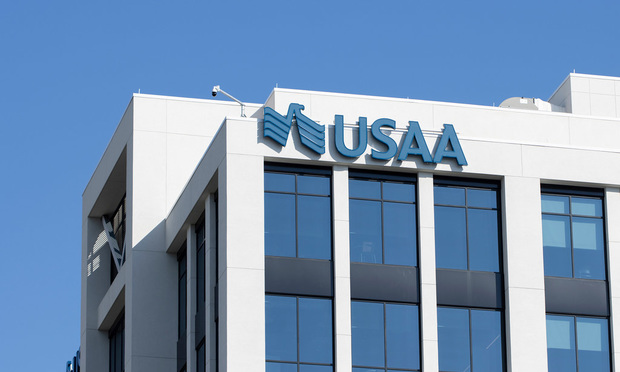Accidents into commercial, public and retail buildings occur more than 60 times per day in the United States, resulting in as many as 500 fatalities and more than 4,000 serious injuries annually.
The cost of these accidents to the insurance industry runs into the hundreds of millions of dollars per year, and is climbing.
The Storefront Safety Council has collected data on nearly 10,000 incidents over almost five years. These are referred to as “storefront crashes” because such a high percentage fit into that category. Through 2016, data collection efforts produced the following results:
|Cost of crashes to insurers
The costs of these accidents are born largely by insurers. The driver's insurance (if the driver is insured at all) covers the first portion up to policy limits, then the business owner or the property owner's insurance kicks in up to the policy limits. After that, lawyers are called in to cover the costs of claims for additional damage, business interruption and injuries. Unfortunately, there has been a substantial increase in the dollar value of claims (both settlements and verdicts) over the last several years.
Some of the larger claims included a $32 million wrongful death claim against a convenience store chain in Massachusetts; a $24 million wrongful death claim against a hotel in Florida; and a $6.6 million claim against a big box retailer for the loss of a leg in a Maryland incident. The Storefront Safety Council is aware of more than $100 million dollars in claims paid in 2015 and 2016 because of vehicle-into-building crashes.
Related: Dealing with terror
This trend is increasing as more cases go to trial and plaintiffs find it easier to show that a location was poorly protected against a foreseeable and preventable risk. Some auto insurers have also followed this strategy against property and business owners to reduce their payouts in six cases.

Related risks continue to rise
There was a rise in “crash & grab” ramraids in 2016, which continues a previously tracked trend. Last year, the two biggest categories for these thefts were ATM machines located in convenience stores and chain pharmacies, and firearms at retail gun stores.
The high cost of repairing the structural damage is almost always much higher than the value of the theft. In the case of gun thefts, however, the situation is magnified by the likelihood that guns stolen from the retailer will be used in the commission of future crimes. Once traced back to the insured gun retailer, civil liability litigation is likely to follow. Enforcement of an underwriting requirement to lock all weapons away at night or installation of crash-tested barriers would go a long way to cut down on this particularly dangerous crime.
|
Berlin, Germany Christmas Terror (Left) Nice, France Summer Terror (right.) Nearly 100 combined deaths and nearly 500 injuries. Deliberate attacks by vehicles are on the rise around the world. (Photos: Emilio Esbardo; Remi Benali/Getty)
|New risks: Terror by truck and deliberate vehicle attacks
There were 86 killed by a truck in Nice, France; one person killed on campus at Ohio State; 12 killed and 56 injured in Berlin, Germany, and like it or not, the use of vehicles to deliberately inflict harm on the public is on the rise. While this is a Homeland Security issue, a city or large commercial property that fails to anticipate the need to protect crowds against deliberate attacks might also face litigation for the lack of preparation and planning required.
Related: Can we put a price on terror?
In November, the ISIS terrorist organization suggested to followers overseas that the use of vehicles to commit terror was very effective and easy to organize. The group suggested events like the Macy's Thanksgiving Parade as being one of several particularly attractive targets.
In response, cities around the United States (as well as all National Football League stadiums and all Major League Baseball parks) have already or are in the process of beefing up protective barriers around sites and especially areas where crowds gather in proximity to city streets. Santa Monica, California; Los Angeles, California; Miami, Florida; Washington, D.C.; and New York City, New York, have all increased pedestrian and crowd security at certain sites.
|Accidental vehicle incursions into crowds increase
During parades, farmer's markets, street fairs and celebrations, streets get closed off, the public turns out in droves, and it feels like party time. But the reality is that one drunk driver (or a medically- or psychologically-impaired driver) can ruin a fun family day. The example most people point to occurred in 2003 at the Santa Monica Farmer's Market (which cost the city a reported $21 million in claims), but these sorts of accidents occur too frequently:
-
South by Southwest in Austin, Texas (2014).
-
Farmer's Market in Hawthorne, New Jersey (2014).
-
Maui Marathon, Hawaii (2014).
-
Street festival in Queens, New York (1999).
-
Oklahoma State Homecoming parade in Stillwell, Oklahoma (2015).
-
Mardi Gras Parade, New Orleans, Louisiana (2017).
A dozen deaths and almost 50 injuries between them – all occurring on city streets during city-sanctioned events. In the end, the risk is assumed by either the promoters or the city because the public has a presumption of personal safety when attending an outdoor event sanctioned by a municipality or group using city streets.
Despite clear guidelines on how to properly secure areas and protect crowds, and increasing liability judgements, cities (and their insurers) have been very slow to take prudent steps to protect the public.
“Sizeable crowds show up to weekly summer music concerts, marathons, festivals, parades, etc., producing crowds where several hundred to several thousands [are] in attendance,” said Keven Moore, of Roeding Insurance Group in Louisville, Kentucky. “Many of these events will have street vendors, alcohol and food concessions; with entire families, strollers, pets standing in the middle of a street distracted by the events of the venue like bowling pins in a bowling alley.”

Times Square in New York is now protected by crash-rated removable bollards. Improving security at a public space or commercial storefront also provides greater safety to the public and invitees as well. (Photo: Calpipe Security Bollards)
|New safety standards
A number of initiatives at the municipal, county and state levels have been introduced over the past three years, and many are now law.
-
Orange County, Florida, passed an ordinance requiring day care and other child care service providers to install protective safety barriers at exposed locations – the county even stepped up to fund up to 50 percent of the cost at each location retrofitting for immediate compliance. Orange County joined Miami/Dade as having ordinances on the books mandating safety barriers at certain locations.
-
Two cities in Los Angeles County, California, have also passed ordinances requiring safety barriers at various locations. Artesia and Malibu became the first cities in the state to do so, though neither required retroactive installation.
-
The state of California passed the most significant legislation; AB2161 (Quirk D20) was signed by Governor Brown and became law on January 1, 2017. The measure provides that the use of certain vehicle barriers at a commercial property may be considered by insurers as safety devices that qualify for a discount on the owner's insurance premiums, as approved by the commissioner of insurance. The measure also encourages the statewide adoption of a standard for such safety devices by the California Building Standards Commission.
“Data tells us that more than 4,000 pedestrians, store patrons and employees are seriously injured every year nationwide in accidents involving storefront crashes,” explained Assemblyman Bill Quirk of California, author of AB2161. “Further, as many as 500 people are killed [annually] due to this type of accident. A little change in how we approach preventative measures can save lives. Most of these crashes can be prevented with some simple and inexpensive steps.”
|Trends to watch
California tends to be a leader in code and liability matters, so watch for additional states to follow suit in the 2017–2018 legislative cycle to encourage the use of safety barriers at parking lots, retail and pedestrian areas, and places where the public congregates.
ASTM has adopted an official test standard (ASTM F-3016), which certifies the effectiveness of any tested barrier in the event of an impact from a 5,000-pound vehicle (large SUV/full-size pickup) at 10 mph, 20 mph and 30 mph. This standard has already been adopted in the Florida ordinance, and will be proposed for California's building code in the coming legislative cycle as well.
There is an increasing trend as state courts continue to rule that claims of foreseeability and a duty of care in accidental and deliberate vehicle incursions are a matter for juries to decide. This is increasing the cost of such litigation and claims settlements for defendants nationally. Commercial property owners and insurers would be prudent to take appropriate precautions to reduce these risks.
Rob Reiter ([email protected]) is an expert in perimeter security and retail and pedestrian safety. He is a co-founder of the Storefront Safety Council and consults with companies in the manufacturing, security and safety industries, and serves as an expert witness in cases nationally.
Want to continue reading?
Become a Free PropertyCasualty360 Digital Reader
Your access to unlimited PropertyCasualty360 content isn’t changing.
Once you are an ALM digital member, you’ll receive:
- Breaking insurance news and analysis, on-site and via our newsletters and custom alerts
- Weekly Insurance Speak podcast featuring exclusive interviews with industry leaders
- Educational webcasts, white papers, and ebooks from industry thought leaders
- Critical converage of the employee benefits and financial advisory markets on our other ALM sites, BenefitsPRO and ThinkAdvisor
Already have an account? Sign In Now
© 2024 ALM Global, LLC, All Rights Reserved. Request academic re-use from www.copyright.com. All other uses, submit a request to [email protected]. For more information visit Asset & Logo Licensing.








